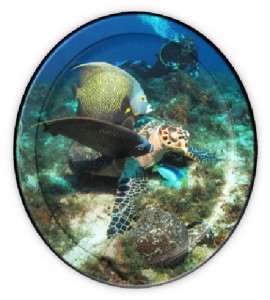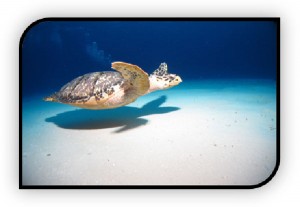News
Underwater Photography in Mexico

Principally there are three main areas for diving along the ‘Riviera Maya’ which have well developed diving provision:

 Cancun itself, with the surrounding, nearby reefs, several wrecks and La Musa (concrete statues depicting the moods of mankind – well worth a visit).
Cancun itself, with the surrounding, nearby reefs, several wrecks and La Musa (concrete statues depicting the moods of mankind – well worth a visit).
Cozumel, simply wonderful and kaleidoscopically coloured reefs, abundant marine life and sometimes, deep drop-offs.
Playa del Carmen (Playacar), reef diving, Bull Shark diving, and of course……
The Cenotes.
All of these destinations are within easy travelling distance of each other, so much variety offering ‘top ten’ tick box dives in abundance.
But the point of this little article is to chat about the frustrations and pleasures of trying to do justice in photographic form to adequately convey the colours, wildlife and clear water.
Nowadays just about every newbie diver’s first kit purchase is a camera and housing so that they can ‘capture their memories’ – come on, we all did it. Sadly the results are usually terrible and stored in electronic memories in huge numbers. I remember sitting through interminable sessions watching slides that my parents had taken to be followed by the guests showing theirs.
I’m sure the bit of me that died during those darkened room viewings has a lot to do with my subsequent vagueness and inability to concentrate.
So some time ago I set out on a mission to:
 1. Not subject my friends and family to the same, showing them hundreds of not so great pictures.
1. Not subject my friends and family to the same, showing them hundreds of not so great pictures.
2. Actually try to make better images (note the use of the word image here?? Can’t call them snaps or pics any more).
3. Try not to spend too much money, inasmuch as I don’t have any.
In reverse order, the way Sports Personality of the Year does it,
3. Not spending too much money – ouch!!! I use a Canon S95 and Canon housing, INON Z240 strobe, INON wide angle ‘wet’ lenses with various arms ranging lights etc, etc (this was the cheap option!!!).
2. A fully manual camera, fill-in light and wide angle lens, good images are automatic, right ?? Wrong.
There are many sources of information regarding underwater photography written by far more learned people than me. However, one thing I’ve noticed, is that socially, photographers can attract, shall I say, ‘negative vibes’ from staff and other customers on dive trips.
 At my stage on the UW photographic learning curve I need time to take the shot. I can’t just fire off several rounds into the reef and come back with a masterpiece. My results are delivered from almost painful adjustments and experiments.
At my stage on the UW photographic learning curve I need time to take the shot. I can’t just fire off several rounds into the reef and come back with a masterpiece. My results are delivered from almost painful adjustments and experiments.
Time is of the essence when you’re a photographic grasshopper. Other divers just don’t understand your needs. The more time you spend shooting that colourful slug, the shorter their boredom threshold becomes (an opportunity for them to continue developing their buoyancy skills I say).
The dive guides in Mexico were relaxed about us hanging off the back of the dive if a tad unprepared for how distant we’d get. Once they became accustomed to our needs it worked well as it tended to separate us from the other guests.
Photographers tend to hog the best spot to see the beasties, worried that they will disappear if confronted by flailing, gasping and panting newly qualified frogpersons. This too can cause annoyance.
 By being a little detached from the group these potential irritations were removed. Win – win!!
By being a little detached from the group these potential irritations were removed. Win – win!!
So, if like me, you need time to practice with an absolutely huge range of subjects in some of the best conditions you’re ever likely to encounter, then try Mexico.
Wildlife – and I don’t mean the mosquitoes – is massively varied and plentiful. It’s also quite tame. A little care and patience, planning and thought will allow you to approach the animals quite closely. In my experience they seem to tolerate divers more than other places I’ve visited and as such make great models. The turtles are amazing, really awesome.
Among the wide variety of life on display are huge shoals of grunts on the shallow reefs of Cancun. The lack of depth and great light give a wealth of opportunity to practice taking photographs. Truly, the quantities of fish on the reefs here need to be seen to be believed, and I’m told that they are resident all year round.
So, that’s me trying to offer some tips for the beginner.
My last point, not subjecting loved ones et al to viewings of my ‘works of art’… well, I can see where my Parents were coming from. It’s true, I am turning into my Dad.
Travel to these destinations was provided by The Scuba Place:
+44 (0) 207 644 8252
First class accommodation and world class diving are available for all levels of experience and interest. Sail-fish and Whale Shark expeditions in the summer, Bull sharks in the winter, supreme reefs and the Cenotes all year round. Couple that with the welcome Mexico offers and, well… you’ll love it.
Gear News
Introducing the TR-80, IR-50 and CS-30 Regulators from DYNAMICNORD

Whether you are a beginner or a professional diver – with the three new main regulators from DYNAMICNORD, everyone will find their favourite regulator. They all look super stylish.
Excellent performance with the TR-80
Quality and performance are the be-all and end-all for regulators. It is not for nothing that the TR stands for Tec Reg. The innovative design of the TR-80 guarantees absolute reliability – even in ice-cold waters.

Perfect breathing effort at 0.8 J/l / certified for diving in waters below 10 degrees / structural design made of solid brass for best cold protection / membrane-compensated design with dry seal of the first stage / reduced exhalation effort thanks to optimized exhalation membrane and bubble deflector / adjustable Venturi (dive/predive) and adjustment knob for individual inhalation comfort / innovative design of the front cover prevents free-flow in strong currents or when diving with scooters / design made of sandblasted brass, matt chrome finish / 2 HP and 4 LP outlets / mouthpiece made of high-quality, anti-allergic silicone for maximum comfort.


Amazing underwater adventures with the IR-50
The IR-50 is the top regulator for advanced and experienced divers. Natural breathing is the essence of this regulator.

Ideal breathing effort at 0.8 J/l /certified for diving in waters below 10 degrees / compensated membrane / adjustable venturi (dive/predive) and adjustment knob for individual inhalation comfort/ outlet valve and deflector for minimum exhalation effort and reduction of bubbles on the face / design made of sandblasted brass, matt chrome finish / 2 HP and 4 NP outlets / mouthpiece made of high-quality, anti-allergic silicone for maximum comfort.


The Workhorse – our CS-30
For diving centres and diving beginners – the workhorse stands for strong construction, reliability and robustness. Perfect for your training.

Optimal breathing effort at 0.8 J/l /recommended for diving in waters above 10 degrees / non-compensated piston / adjustable venturi (dive/predive) / outlet valve and deflector for minimum exhalation effort and reduction of bubbles on the face / design made of sandblasted brass, matt chrome finish / 1 HP and 3 NP outlets / mouthpiece made of high-quality, anti-allergic silicone for maximum comfort.


Octopus OP-30
The OP-30 is the ideal addition to all DYNAMICNORD regulators. It is identical in construction to the CS-30.

The TR-80, IR-50, CS-30 (DIN & INT) regulators and the Octopus OP-30 are available from DYNAMICNORD dealers and in the online store.
DYNAMICNORD – Your Outdoor Companion.
Marine Life & Conservation
Paul Watson Released as Denmark Blocks Japan’s Extradition Bid

Renowned anti-whaling activist Paul Watson has been released from custody in Greenland after spending five months in detention. Denmark’s Justice Ministry rejected Japan’s request for his extradition, citing insufficient guarantees that his time already served in custody would be credited against any potential sentence.
The 74-year-old Canadian-American was arrested on July 21 in Nuuk, Greenland’s capital, when his ship docked to refuel. His arrest was based on a 2012 Japanese warrant related to a 2010 encounter in Antarctic waters. Japan alleged Watson obstructed operations and caused damage to a whaling research ship during efforts to disrupt illegal whaling. Watson has consistently denied these claims, maintaining his commitment to marine conservation.
Denmark, which oversees extradition matters for Greenland, concluded that while the legal conditions for extradition were met, the lack of assurances from Japan regarding time-served credit made extradition untenable.
In a video shared by his foundation, Watson expressed gratitude and relief, saying, “After five months, it’s good to be out… and good to know they’re not sending me to Japan.” He added that the most difficult part of his time in custody was being separated from his two young sons.
Watson is a pioneering figure in marine conservation, known for founding the Captain Paul Watson Foundation in 2022 after decades of activism with the Sea Shepherd Conservation Society. His bold efforts to defend marine life have earned him widespread support, including from celebrities and conservationists. His work has also been featured in the acclaimed reality TV series Whale Wars.
Watson’s lawyer, Jonas Christoffersen, praised the decision, stating, “We are happy and relieved that Paul Watson is now free.” He added that Watson is eager to reunite with his family and continue his vital work.
The arrest occurred while Watson’s vessel, the M/Y John Paul DeJoria, was en route to the North Pacific with a team of 26 volunteers to intercept a Japanese whaling ship. His foundation described the arrest as politically motivated and emphasized that Watson’s actions were focused on ending illegal whaling practices.
Japan resumed commercial whaling in 2019 after leaving the International Whaling Commission, asserting that whale meat is a cultural tradition. Conservationists, however, continue to challenge these practices, highlighting their impact on marine ecosystems.
Despite the challenges, Watson remains steadfast in his mission to protect marine life and bring attention to whaling practices. His dedication to ocean conservation has made him a globally respected advocate for the environment.
-

 News2 months ago
News2 months agoIconic SS United States to become the World’s Largest Artificial Reef
-

 News3 months ago
News3 months agoBook Review – 52 Assignments: Underwater Photography
-

 Gear News3 months ago
Gear News3 months agoDYNAMICNORD – New German diving brand enters the British market
-

 News3 months ago
News3 months agoExploring Cenote El Pit: A Diver’s Dream
-

 Gear News3 months ago
Gear News3 months agoTry BARE drysuits (and maybe even win one!) this Friday with Sea & Sea at North West Dive Fest
-

 Marine Life & Conservation3 months ago
Marine Life & Conservation3 months agoBook Review: Coral Triangle Cameos
-

 Blogs2 months ago
Blogs2 months agoDive the Egyptian Red Sea this Autumn with Regaldive
-

 News3 months ago
News3 months ago2024 Ocean Art Underwater Photo Competition Announced

















